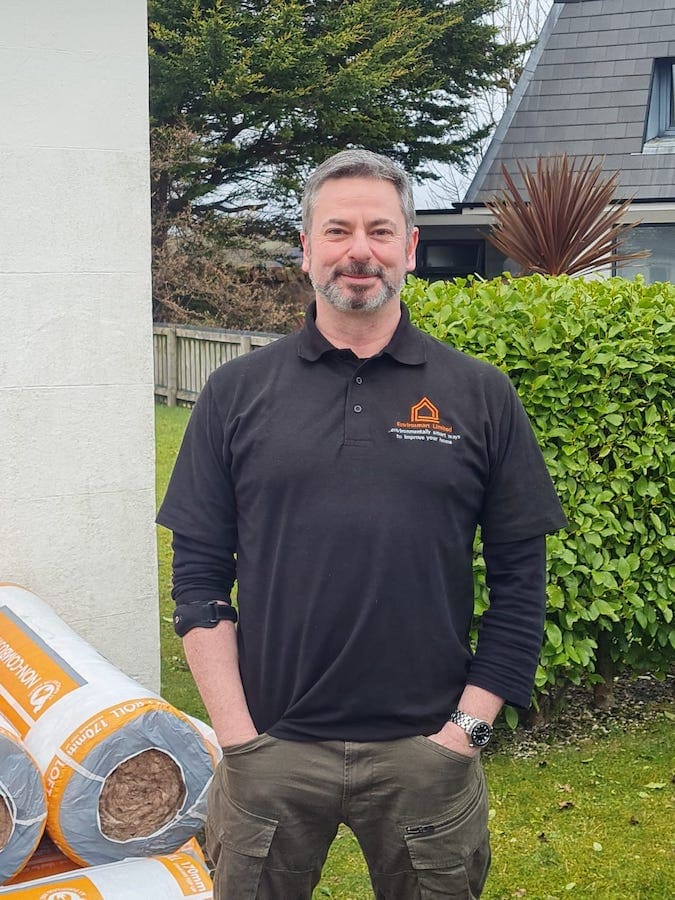The Power of External Wall Insulation: Transforming Your Home and Reducing Energy Costs
Introduction
When it comes to energy efficiency and maintaining a comfortable living space, the importance of proper insulation cannot be overstated. One of the most effective ways to enhance insulation and reduce energy costs is through external wall insulation. This innovative technique not only enhances the aesthetics of your home but also provides numerous long-term benefits. In this blog post, we will explore the concept of external wall insulation, its advantages, and why it should be a consideration for homeowners looking to improve their property’s energy efficiency.
What is External Wall Insulation?
External wall insulation, also known as EWI, is a technique that involves applying an insulating layer to the exterior walls of a building. This layer is typically made up of insulation materials, such as expanded polystyrene (EPS), mineral wool, or polyurethane foam, which are then covered with a weather-resistant render or cladding system. The primary purpose of this insulation is to minimize heat loss and increase thermal efficiency.
Advantages of External Wall Insulation
- Energy Efficiency: One of the most significant benefits of external wall insulation is its ability to improve the energy efficiency of a home. By reducing heat loss through the walls, it helps to maintain a consistent internal temperature, minimizing the need for heating or cooling systems. This translates into lower energy consumption and reduced utility bills.
- Enhanced Comfort: External wall insulation creates a more comfortable living environment by eliminating cold spots and drafts. It helps to regulate indoor temperatures, ensuring a consistent and cozy atmosphere throughout the year. Additionally, the insulation also acts as a sound barrier, reducing external noise pollution, and creating a peaceful indoor ambiance.
- Aesthetic Improvement: Apart from its functional benefits, external wall insulation can also enhance the visual appeal of your home. With a wide range of finishes, colors, and textures available, you can choose a rendering or cladding system that complements your architectural style, adding a fresh and modern look to your property. This not only increases curb appeal but also potentially raises the value of your home.
- Condensation Prevention: External wall insulation helps prevent condensation on internal walls by creating a thermal barrier. By maintaining a consistent temperature, it reduces the likelihood of moisture buildup, mold growth, and associated health issues. Improved air quality and a healthier living environment are additional advantages of this insulation method.
- Sustainability: Investing in external wall insulation is an environmentally responsible choice. By reducing energy consumption and greenhouse gas emissions, you contribute to a greener future. Moreover, some insulation materials used in external wall insulation are recyclable and contribute to a lower carbon footprint.
Considerations and Installation Process
Before proceeding with external wall insulation, it is important to consult with a qualified professional who can assess the suitability of your property and guide you through the installation process. Factors such as the building’s structure, condition, and local regulations need to be considered. A professional installer will ensure proper ventilation, appropriate materials, and a high-quality finish.
The installation process typically involves the following steps:
- Surface preparation: Cleaning and repairing the existing wall surface to ensure a smooth and solid foundation.
- Insulation application: Fixing the insulation boards to the wall using adhesive or mechanical fixings.
- Protective layer installation: Applying a layer of render or cladding system to protect the insulation and provide an aesthetically pleasing finish.
- Finishing touches: Adding decorative features, such as trims and architectural details, as desired.
Conclusion
External wall insulation offers a host of benefits, from energy efficiency and enhanced comfort to improved aesthetics and sustainability. By investing in this insulation technique, homeowners can create a more pleasant living environment while reducing their energy costs and environmental impact. Whether you are looking to upgrade your home or simply seeking ways to improve your property’s insulation, external wall insulation is a compelling option to consider.
It is essential to research and engage the services of experienced professionals who specialize in external wall insulation. They can provide expert guidance throughout the process, ensuring that your installation meets the necessary standards and regulations. Additionally, they can recommend the most suitable insulation materials and finishes based on your specific requirements and preferences.
When evaluating the cost of external wall insulation, it is crucial to consider the long-term savings on energy bills. While the initial investment may seem significant, the reduction in heating and cooling expenses over time can offset the upfront costs. Additionally, some regions offer government incentives or grants for energy-efficient home improvements, making external wall insulation even more financially viable.
In conclusion, external wall insulation is a highly effective method to enhance your home’s energy efficiency, comfort, and aesthetics. By reducing heat loss, preventing condensation, and providing a stylish exterior, this insulation technique offers a wide range of benefits for homeowners. Embracing external wall insulation not only improves your quality of life but also contributes to a more sustainable future. So why wait? Consider the advantages of external wall insulation and take a step toward a more energy-efficient and comfortable home.
